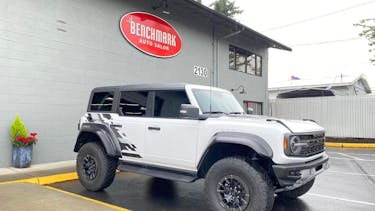Washington State Tint Laws: Your Complete Guide to Compliance and Benefits
Thinking about tinting your car windows in Washington? Here’s everything you need to know to stay legal, safe, and stylish on the road.

Following Washington State tint laws isn’t just about avoiding a ticket—it’s about ensuring safety, protecting your investment, and staying confident on the road. Illegal tint can reduce visibility for law enforcement, emergency responders, and even you as the driver, especially at night or in poor weather.
By staying compliant, you safeguard yourself from fines, failed inspections, and the hassle of having to remove or replace your tint. Plus, legal tint still gives you all the benefits — UV protection, heat reduction, and added privacy — without the stress of wondering if you’ll be pulled over. In short, following the law means driving with peace of mind, style, and safety.
What Is VLT (Visible Light Transmission)?
VLT is the percentage of visible light that passes through your vehicle’s windows. A higher VLT percentage means a lighter tint. For example tint with a 24% VLT is quite dark. It allows only 24% of light through.
Legal Tint Limits in Washington State
Washington State tint laws differentiates between sedans and multi-purpose vehicles like SUVs and vans. Below we break down how these regulations vary based on vehicle type.
Sedans
- Windshield (Top 6") — Any non-reflective tint on top 6" w/ no tint below
- Front Side Windows — Must allow ≥ 24% VLT
- Rear Side Windows — Must allow ≥ 24% VLT
- Read Window — Must allow ≥ 24% VLT
SUVs & Vans
- Windshield (Top 6") — Any non-reflective tint on top 6" w/ no tint below
- Front Side Windows — Must allow ≥ 24% VLT
- Rear Side Windows — No VLT limit (any darkness)
- Read Window — No VLT limit
Window Tint Reflection
Window tint helps cut down glare and heat by reflecting incoming light, but Washington law sets limits on how reflective your tint can be. On the front side windows and rear side windows of sedans, SUVs, and vans, the tint must not exceed 35% reflectivity.
Other Must-Know Regulations
Mirror Requirement
If you tint the rear window, your vehicle must have dual side mirrors (both left and right) to ensure adequate rear visibility.
Prohibited Tint Colors
Colors like red, gold, yellow, or mirror-finish films are outright banned.
Certification
In order for the tint to be legal in Washington, it must be manufactured by a certified manufacturer. If you work with a reputable Seattle tint installer, they will be able to provide accurate information about the film being used.
Medical Exemptions
If a licensed physician provides written verification, darker tints beyond standard legal limits are allowed — including full tinting below the AS‑1 line or top 6" of the windshield. A reputable installer will require proof of such verification.
Washington State Tine Enforcement & Penalties
Non-compliant tints are a traffic infraction, enforceable with fines—or even required removal to pass an inspection,
While some drivers share anecdotes of rarely being stopped for darker tint across communities, the law remains enforced and risks still apply..
Why Bother with Tint? The Benefits
- UV Protection: Shields you and your interior from harmful rays.
- Heat Reduction: Keeps your car cooler in summer.
- Privacy: Keeps prying eyes out.
- Shatter Resistance: Adds safety against glass breakage.
- Style Boost: Gives your car a sleek edge.
Pro Tips for Safe Tinting
- Install Professionally: Use a certified shop to ensure legal compliance and proper installation. (Learn about the dangers of mobile window tinting.)
- Check Combined VLT: Factory tint + film must meet state VLT rules.
- Secure a Medical Permit If Eligible.
- Understand Your Vehicle Type: Differing rules for sedans vs. SUVs.
Schedule Your Tint Installation
For more than 13 years, Benchmark Auto Salon has provided tint and paint protection services. Our conveniently located Lynnwood shop is just a short drive from downtown Seattle and the Eastside. We work in a sterile environment, with the highest quality products available, and an expertly trained staff.
When you bring your vehicle to Benchmark, we’re not just providing a service. We’re taking care of you vehicle like we would our own.


